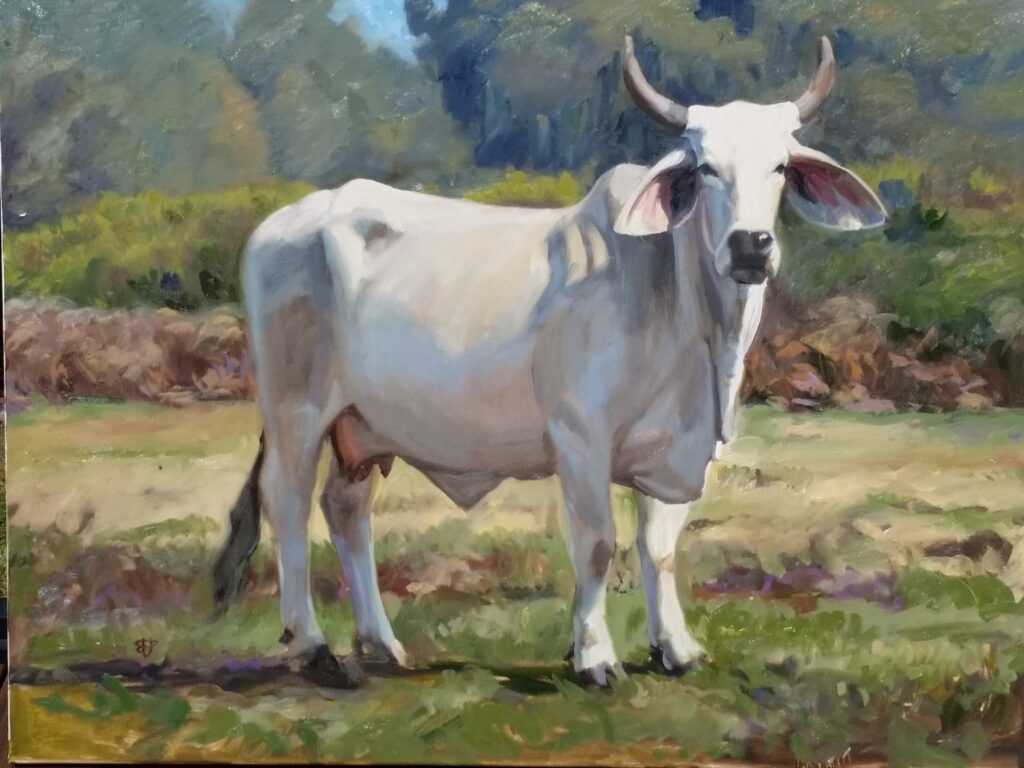Painter Blair Updike Uses Art to Advance Conservation
by K. MICHELE TRICE
photos by LEXI WHAREM
Artists have long been the voice of activism, crying out for change through their work. Blair Updike, eighth-generation Floridian and former mayor of Highland Park, is an artist whose activism shines through in her oil paintings.
Updike says she didn’t start out to be a conservation artist.
“I painted things I thought were pretty or that I liked,” she says. “Then things started changing, and a lot of the things I painted were gone. It changed the way I looked at art.”
She says she usually describes her art style by telling people, “I make paintings to remind people real Florida is out there and worth keeping.”
“Some people don’t go outside of the city,” she continues. Her art gives them a little peek into other things.
Her activism includes work with All Florida, a conservation organization dedicated to the preservation of “wild” Florida. The group’s website states its mission is: “to strategically influence the future of Wild Florida by creating a conservation community that shows up, speaks up, and engages in tangible ways with shaping our state.”
The group stands on the four pillars of protecting woods, water, wildlife, and way of life. One of the ways Updike uses her art to advance conservation is by creating paintings at events for organizations such as All Florida and allowing the organization to auction the painting with proceeds going toward the organization.
All Florida also works to have representation at an array of public meetings where conservation issues are discussed.
“All Florida facilitates putting people together so the right people are in the room,” Updike explains. “Making sure the public is in meetings to provide input is a big deal.”
“We are the ones living with the decisions being made,” she continues. “We should go speak up for ourselves.”
She has also been active in Polk Forever, a group of conservation-minded volunteers working to protect Polk County’s remaining wild lands.
“Blair’s artwork captures the essence of the Florida we all love,” says Matt Pearce of Pearce Cattle Co. Pearce is the Past Florida Cattlemen’s Association President and current Chairman of Conservation Florida.
“From cabbage palms to oak trees as well as woods, water, wildlife and cattle ranches. It’s representative of what we all care about,” Pearce continues.
Updike’s agricultural history began as a child. Her father was involved in the citrus industry and her mother’s family has been in Florida since the 1840s. She grew up involved in 4H and embedded in agriculture with bunnies, chickens, hogs, and citrus.
“We did the whole thing, but we were not big landowners or farmers,” she says, “unless you count our 80 pet chickens.”
She learned to paint when she was 16 and in high school. After attending college at Stetson University, she worked for the family business until her painting hobby began to consume more of her time than a hobby would allow, and she moved into art as a profession.
She describes her painting style as “a Rembrandt-type approach to realism.” She uses Impressionistic colors to convey her messages.
“The further away you get from one of my paintings, the clearer it is. Up close, it’s very abstract,” Updike says. “It looks really dimensional from a distance. It’s a very traditional style of painting.”
This year, she participated in a panel discussion with conservation photographer Carlton Ward when Path of the Panther came to Lakeland. She also is in the new Discover Florida series called Protect Our Paradise.
Many of her paintings include cattle, and she says if she paints at a show, “there will always be a cowboy or Seminole included. These are key to Florida culture.”
“Blair does a fabulous job, showcasing Florida’s unique landscape, wildlife, and Florida’s working land,” says Pat Durden, president of the Florida Cattlemen’s Association.
“Her passion for Florida and land conservation shine through all of her paintings.”
“There is a cultural component that attracted me to cattle,” she says. “Florida culture is overlooked a lot, but we have a sense of identity that is grounded in the land. Sometimes, people don’t realize our history or that it’s current.”





